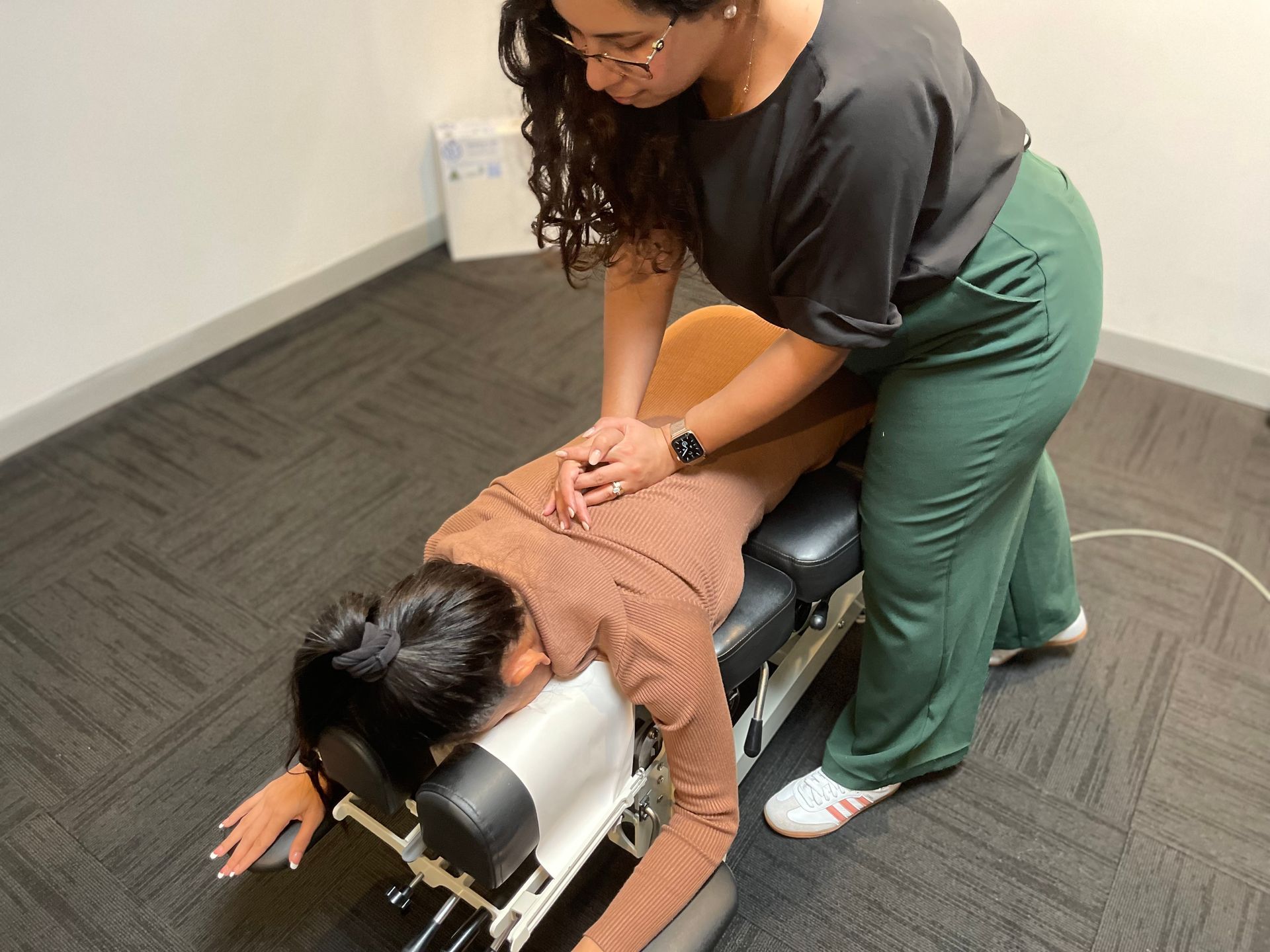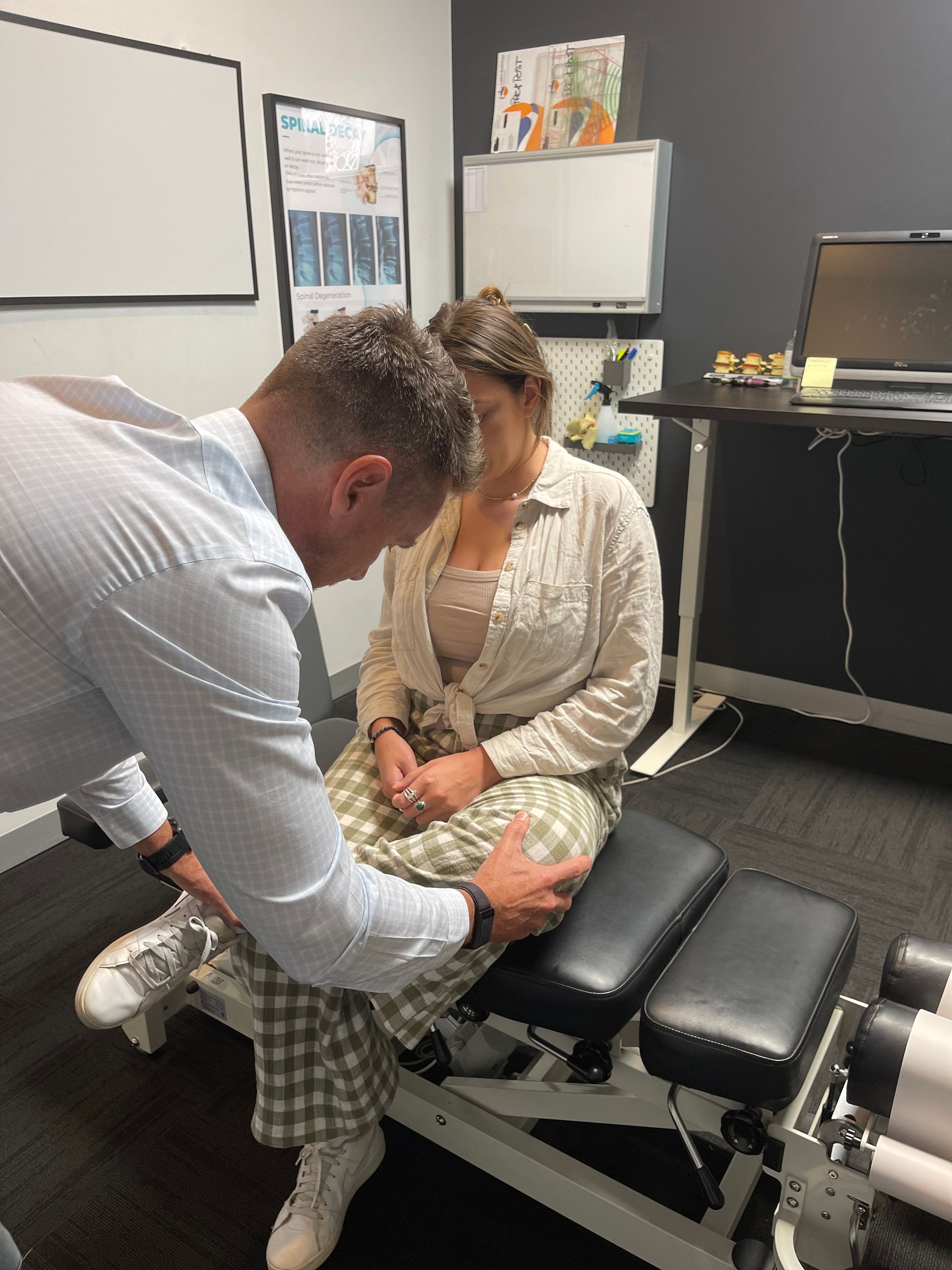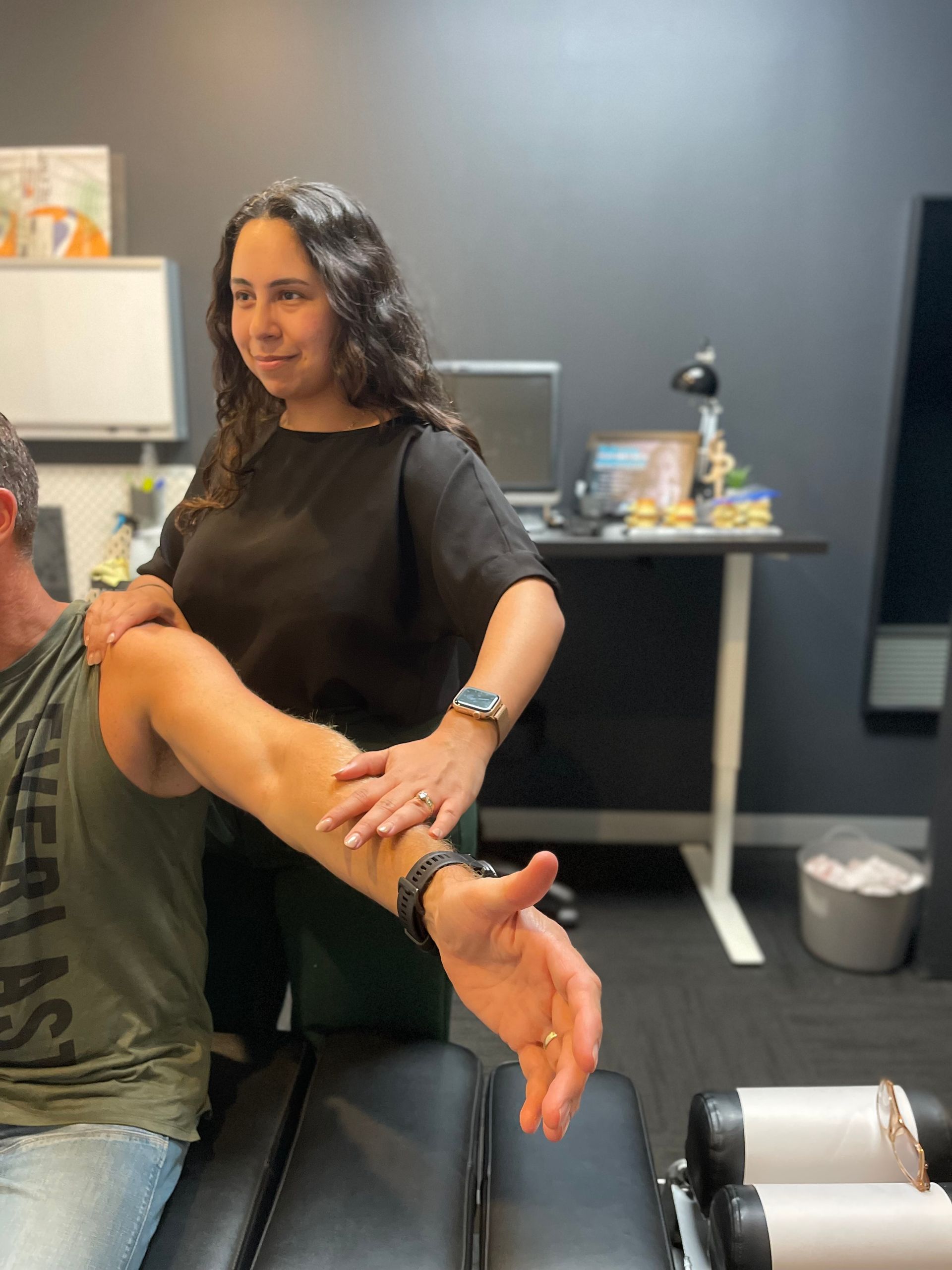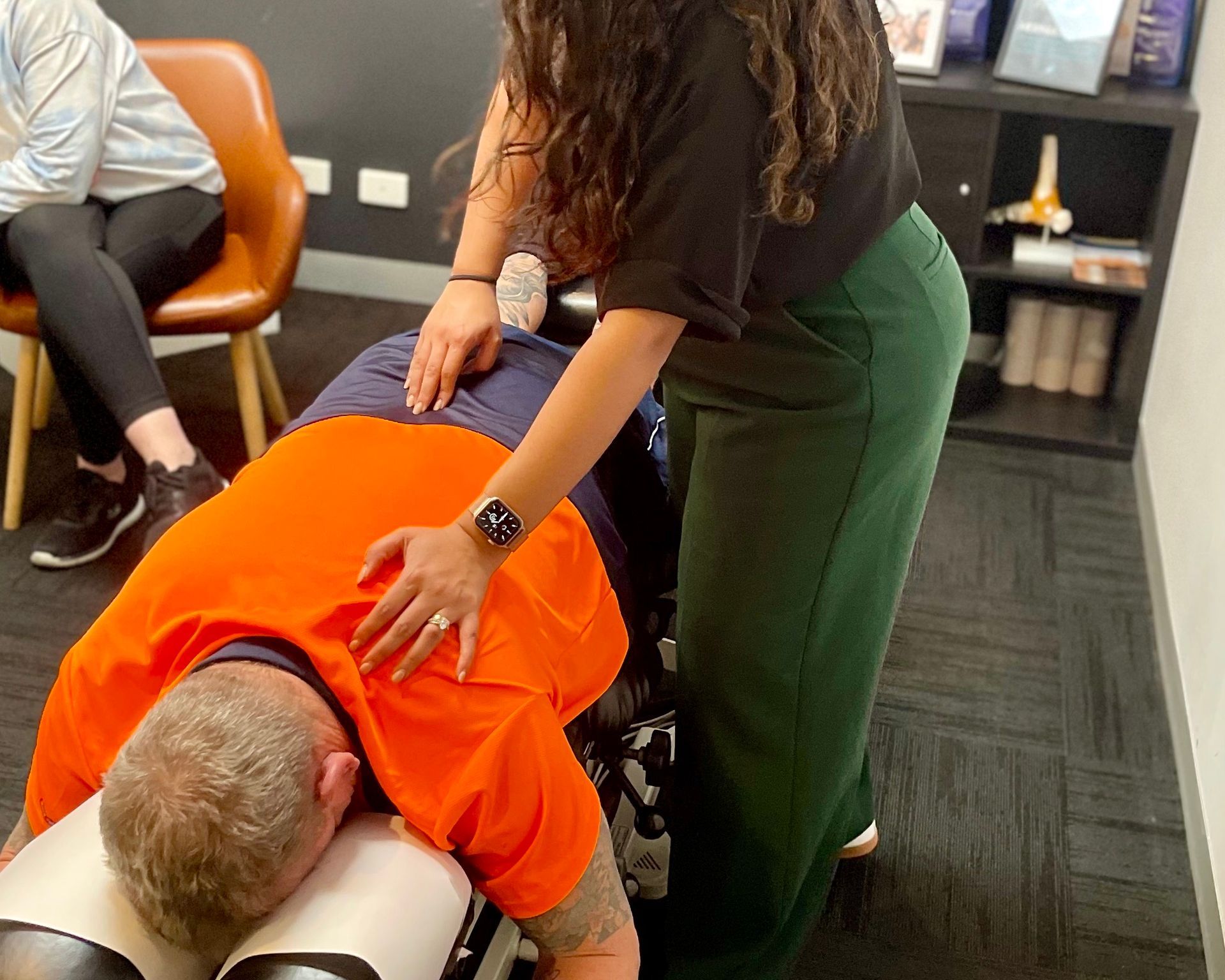Is A Chiropractor The Same As A Massage Therapist
Chiropractors and massage therapists differ. Both professions treat body pain and tension differently, but are they similar?
This article will compare these two practices, their methods, and their therapeutic benefits. To improve health, chiropractic care aligns the spine and nervous system. This holistic approach addresses both symptoms and causes by acknowledging the interconnectedness of our body's systems. After reading this article we shall be able to answer the question: is a chiropractor the same as a massage therapist?
Massage therapy, on the other hand, manipulates muscles, tendons, and ligaments by hand. It relaxes muscles, reduces tension, improves circulation, and boosts well-being. Chiropractors and massage therapists both treat pain and promote healing, but their methods differ. Intrigued by these fields' innovation potential? Learn how chiropractic and massage therapy differ!
Chiropractic Care
Chiropractic care can reduce pain, improve mobility, and boost well-being for a holistic approach to health. Musculoskeletal disorders are my specialty as a chiropractor. I use chiropractic adjustments to realign the spine and joints to relieve nerve pressure and promote natural healing.
Misaligned spines can disrupt the nervous system, causing health problems. My hands-on spinal manipulations and adjustments correct these misalignments and restore body balance. This reduces pain, improves joint function, and boosts health.
Chiropractors correct spinal misalignments, while massage therapists focus on soft tissues like muscles, tendons, and ligaments. Both methods have benefits, but chiropractic care addresses the root cause of pain rather than just relieving it.
Massage helps relax and reduce muscle tension. This can help loosen tight muscles before or after chiropractic adjustments. Massage therapy, along with chiropractic care, can improve your health even more.
Massage Therapy

One profession uses hands-on techniques to relieve muscle tension and relax.
Professional massage therapists manipulate and knead muscles and soft tissues. Patients receive therapeutic massage to reduce stress and pain and improve their well-being.
Patient benefits from massage therapy are numerous. It relaxes muscles by increasing blood flow and oxygenation. This relieves muscle tension and reduces injury risk. Additionally, massage therapy releases endorphins, the body's natural painkillers. This can reduce chronic pain.
Finally, massage therapists can focus on troubled areas for optimal results.
Massage therapy also improves mental and emotional health. Massages release the happy and relaxing neurotransmitters serotonin and dopamine in the brain through gentle pressure. This can help patients relax during their session.
Differences And Similarities
Chiropractors and massage therapists use hands-on techniques, but their training methods differ and overlap.
Chiropractors diagnose, treat, and prevent mechanical disorders of the musculoskeletal system, particularly the spine. However, a massage therapist uses their hands to relax and relieve tension in muscles and soft tissues. Both professions aim to relieve pain and promote well-being, but they specialize in different areas.
Training and education distinguish chiropractors from massage therapists. Chiropractic students spend four years in college and four to five years in a Doctor of Chiropractic program. They learn anatomy, physiology, biomechanics, diagnostics, and treatment methods in this rigorous training. Massage therapists complete a shorter program focused on massage techniques.
Each profession's scope of practice differs. Chiropractors use physical exams and imaging tests like X-rays and MRIs to diagnose conditions. They can restore spine alignment and mobility with controlled-force spinal adjustments. Massage therapists manipulate soft tissues to improve circulation, reduce muscle tension, and relieve pain, not diagnose medical conditions.
Chiropractic and massage therapy share some treatment methods, despite their differences. Both fields prioritize patient-centered care by tailoring treatments to individual needs. They take a holistic approach to health, considering how diet and exercise affect musculoskeletal health.
Patient Care Approach

Chiropractors and massage therapists take a patient-centered approach to musculoskeletal care. Both chiropractors and massage therapists prioritize patient well-being and provide personalized care to meet their needs.
Chiropractic care includes spinal adjustments. They treat patients holistically, considering their overall health. Chiropractors examine the spine for misalignments or subluxations that may cause pain. Chiropractors use spinal adjustments to realign the body, relieve nerve pressure, and promote healing. Chiropractors can treat symptoms and set long-term wellness goals with this patient-centered approach.
Massage therapists use hands-on manipulation of soft tissues to relieve muscle tension and relax. Massage involves various manual manipulation techniques. Massage therapists improve blood circulation, muscle stiffness, pain, and range of motion by applying pressure and kneading muscles. Beyond physical relief, massage therapy can reduce stress and improve mental health.
Chiropractic and massage therapy emphasize personalized, patient-centered care. Massage therapy relieves muscle tension for relaxation, while chiropractic care corrects spinal misalignments for overall wellness. Both professions can collaborate to provide comprehensive musculoskeletal healthcare.
With an understanding of how these two practices complement each other's patient care approaches, we can move on to how they relieve pain and tension without another transition step. This seamless integration of chiropractic and massage therapy techniques provides comprehensive musculoskeletal healthcare solutions that address the root causes of pain and tension for long-term relief and improved well-being.
Pain And Tension Relief
Imagine a gentle touch and manipulation that relieves your pain and tension, bringing you relief and relaxation. Chiropractors and massage therapists provide that.
Chiropractors and massage therapists train to relieve body pain and tension. Both professionals aim to relieve pain through spinal adjustments or hands-on techniques.
Chiropractors align the spine and nervous system to improve health. They can correct painful or tense misalignments with manual adjustments or specialized instruments. These adjustments help the body heal naturally by restoring function. However, a massage therapist manipulates muscles and soft tissues by kneading, rubbing, or applying pressure. They relax and relieve muscle tension with these methods.
Chiropractors and massage therapists aim to relieve pain and tension. However, each person's needs may dictate their approach. Chiropractic care focuses on spine and nervous system issues that may be causing body pain or tension. Muscle manipulation through massage targets specific pain points.
Chiropractic or massage therapy for pain and tension relief depends on your preferences and needs. Both professionals use different methods to relieve pain and promote well-being.
We will discuss acupuncture, herbal therapy, and yoga in the next section about complementary modalities, which can enhance chiropractic care and massage therapy in relieving pain and tension without medication or invasive procedures. These modalities can help people manage pain and improve their health in a natural way. By adding these complementary treatments to their healthcare routine, people can maximize the benefits of chiropractic and massage therapy and reduce their use of medication or invasive procedures.
Complementary Modalities

Is a chiropractor the same as a massage therapist? Let us know more by knowing the complementary modalities. Explore complementary modalities to improve your pain and tension relief and well-being. Chiropractic and massage therapists provide valuable body services, but other modalities can enhance their results.
Complementary modalities can target specific muscles or tension by focusing on energy flow or mind-body connection. Acupuncture, which raises energy flow with thin needles, is a popular complementary therapy. Using these acupuncture points, practitioners hope to reduce pain, improve circulation, and relax. This technique helps correct body imbalances and works well with chiropractic adjustments and massages.
Yoga therapy, which combines deep breathing and gentle stretching, is also effective. Yoga therapy reduces muscle tension, improves posture, and increases flexibility. Yoga can strengthen your body and boost chiropractic adjustments and massages for pain management.
Besides acupuncture and yoga, aromatherapy and meditation are worth trying. Aromatherapy utilizes essential plant oils to promote relaxation and alleviate pain. Meditation, however, uses mindfulness to calm the mind. Both of these techniques, before or after a chiropractor or massage, can provide more holistic pain relief.
Adding these complementary modalities to your chiropractor or massage therapist's treatment plan can improve pain and tension relief. These alternative methods help manage discomfort and improve well-being.
Treatment Techniques
Add these pain management techniques to your routine to transform your body and mind. Spinal manipulation is a common chiropractic technique. Chiropractors apply controlled force to specific joints to improve mobility and relieve pain.
Instead, massage therapy manipulates soft tissues. Massage therapists use various strokes and pressures to relax muscles. Chiropractic treatment includes other therapies besides spinal and soft tissue manipulation. Ultrasound, electrical stimulation, and hot or cold packs are examples.
Sound waves penetrate deep tissues to heal and reduce inflammation in ultrasound therapy. Electrical stimulation relieves pain by stimulating muscles and nerves with low-level current. Healthcare providers use hot or cold packs to relieve muscle pain and swelling.
Massage therapy offers several ways to manage pain. Swedish massage, with its long strokes and kneading, is popular for relaxing the whole body. Deep tissue massage treats chronic tension or injury-related pain by targeting deeper muscle and connective tissue. Finally, trigger point therapy targets muscle tightness with direct pressure or stretching.
Add chiropractic and massage therapy to your pain management routine for significant therapeutic benefits. Both treatments aim to reduce muscle tension, improve circulation, range of motion, and well-being.
Therapeutic Benefits
After discussing chiropractors and massage therapists' treatment methods, let's discuss their therapeutic benefits. I've seen spinal manipulation's amazing healing effects on my patients as a chiropractor. Chiropractic adjustments realign vertebrae and restore nerve function, relieving pain, improving mobility, and improving overall health.
However, massage therapists manipulate muscles and soft tissues to relax and relieve tension. They can relieve muscle tension with Swedish, deep tissue, or trigger point massage. An experienced massage therapist releases knots and improves blood circulation to replenish damaged tissues with oxygen and nutrients.
The therapeutic benefits of chiropractors and massage therapists are complementary. Massages treat muscles, while chiropractic adjustments align the spine to improve nervous system function. This combination can greatly improve pain management for back, neck, headache, and fibromyalgia sufferers.
It's important to note that while both professions provide valuable therapy for musculoskeletal patients, their approaches differ greatly as we discuss their training and education. Academic studies in anatomy, physiology, and neurology and spinal manipulation training are required for chiropractors. Massage therapists study anatomy but focus on hands-on manipulation.
Training And Education

Explore the rigorous academic and practical training these professionals undergo to provide therapeutic benefits and fully understand their training and education.
Chiropractors and massage therapists receive specialized training to treat patients.
After a four-year undergraduate degree, chiropractors attend four years of chiropractic school. At this time, they study anatomy, physiology, biochemistry, and pathology. They also receive extensive spinal manipulation and chiropractic therapy hands-on training. Before licensing, chiropractors must pass national board exams.
However, massage therapists complete a shorter program of several months to two years. They study human anatomy, physiology, and massage techniques. Massage therapy programs often include supervised clinical experience to help students practice their skills.
Both professions require formal education and training, but their focus differs. Chiropractors diagnose and treat musculoskeletal conditions with spinal adjustments and other manual therapies. Therapists use various massage techniques to relax and relieve muscle tension.
To conclude, chiropractors and massage therapists receive extensive training to treat patients. Chiropractors study advanced topics for longer, but massage therapists learn specific techniques faster. Understanding these training differences helps us appreciate each profession's unique skills when delivering holistic wellness approaches.
Holistic Approaches
Massage therapists and chiropractors are essential to holistic healthcare. Although they have different training and educational backgrounds, they aim to provide natural, non-invasive healing.
Massage therapists relieve tension by manipulating soft tissues, while chiropractors align the spine and nervous system. Despite their differences, chiropractic and massage therapy often work together to improve health.
Spinal adjustments distinguish chiropractors from massage therapists. Chiropractors undergo extensive training to understand how spine misalignments impact health. They use specific techniques to restore spine alignment and function, which can reduce pain, improve mobility, and boost wellness. Massage therapists manipulate muscles using Swedish or deep tissue massages. They reduce stress and promote relaxation.
Chiropractors and massage therapists often work together to treat patients. Chiropractic clinics often offer therapeutic massages along with spinal adjustments. Patients can benefit from both modalities with this approach. A chiropractor may adjust the spine to address structural issues causing discomfort or limited mobility, while a massage therapist can relieve muscle tension.
The combination of chiropractic and massage therapy gives patients a holistic treatment plan that addresses physical symptoms and promotes mental relaxation. Both approaches recognize that our bodies are interconnected systems where imbalances in one area can affect others. Chiropractors and massage therapists collaborate as a healthcare team to improve patient care by combining their skills.
Both chiropractic and massage therapy contribute to holistic healthcare. Massage therapy relaxes and relieves tension, while chiropractors realign the spine and improve nervous system function. However, these two modalities often collaborate to provide comprehensive patient care. Chiropractic and massage therapists collaborate to provide a more holistic approach to patient care that addresses physical symptoms and overall well-being.
Final Thoughts
This article aims to answer the question: is a chiropractor the same as a massage therapist? As someone who has had both chiropractic care and massage therapy, I can say that while they're similar, they're different.
Chiropractic adjustments promote spinal and nervous system alignment and health. However, massage therapists manipulate soft tissues to relax and relieve muscle tension.
Chiropractic and massage therapy can relieve pain and improve mobility, but their methods differ. Massage therapists manipulate muscles and tissues, while chiropractors align the body. In different fields, both professions require extensive training and education.
Your needs and preferences determine whether you choose a chiropractor or massage therapist. Chiropractic care may be best if you want a holistic approach to spine alignment and wellness. If you want targeted muscle tension relief or to relax, a massage therapist may be better. To determine the best approach for you, consult with experts in each field.
Frequently Asked Questions
Can Chiropractic Care Or Massage Therapy Cure My Chronic Condition?
Chiropractic and massage can help manage chronic conditions, but they don't cure them.
As a chiropractor, I manually align the spine and nervous system to relieve pain and improve function. Massage therapy concentrates on soft tissue manipulation to relax muscles. These treatments can relieve symptoms, but healthcare is constantly evolving, and new methods or technologies may benefit your condition.
Consider all your treatment options and talk to your doctor to find the best one.
Is It Common For Chiropractors Or Massage Therapists To Work Together In The Same Clinic?
Chiropractic and massage therapists often work together in clinics. This collaboration combines the benefits of both disciplines for holistic patient care.
Massage therapists relieve tension and relax, while chiropractors align the spine and improve musculoskeletal function. They can relieve muscle tightness and pain and fix structural issues by working together.
This integrated approach provides patients with a more comprehensive treatment plan that addresses the cause and provides immediate relief. This innovative method improves results and patient well-being.
How Long Does A Typical Chiropractic Appointment Last?
A typical chiropractic visit lasts 15–30 minutes. The chiropractor will evaluate your condition, adjust or manipulate your spine or joints, and recommend exercises or lifestyle changes to improve your health.
Chiropractors and massage therapists may collaborate in some clinics, but their roles are different. Chiropractic treatments for back, neck, and headache pain focus on the musculoskeletal system and are manual. However, massage therapists use hands-on manipulation of soft tissues to relax, relieve muscle tension, and improve circulation.
Both professions provide valuable holistic healthcare services but have different roles.
Are There Any Potential Risks Or Side Effects Associated With Chiropractic Care Or Massage Therapy?
Chiropractic and massage therapy have risks and side effects. Some chiropractic patients experience soreness or discomfort after an adjustment. Rarely, muscle strains or nerve damage occur.
While massage therapy is safe, deep tissue massages can cause soreness or bruising. Most people benefit from these treatments, and these risks are rare.
As with any medical treatment, consult a doctor before getting chiropractic or massage therapy.
Can Chiropractic Care Or Massage Therapy Be Covered By Health Insurance?
Insurance covers massage and chiropractic care. Many health plans cover these treatments as part of their alternative or complementary medicine benefits. However, you should check with your insurance provider to understand your coverage and any restrictions.
Some insurance plans require a primary care physician referral or limit the types and number of covered sessions. It is important to note that some insurance plans cover both chiropractic and massage therapy, while others only cover one. Therefore, it is important to review your policy and ask your doctor what services are covered before seeking treatment.
